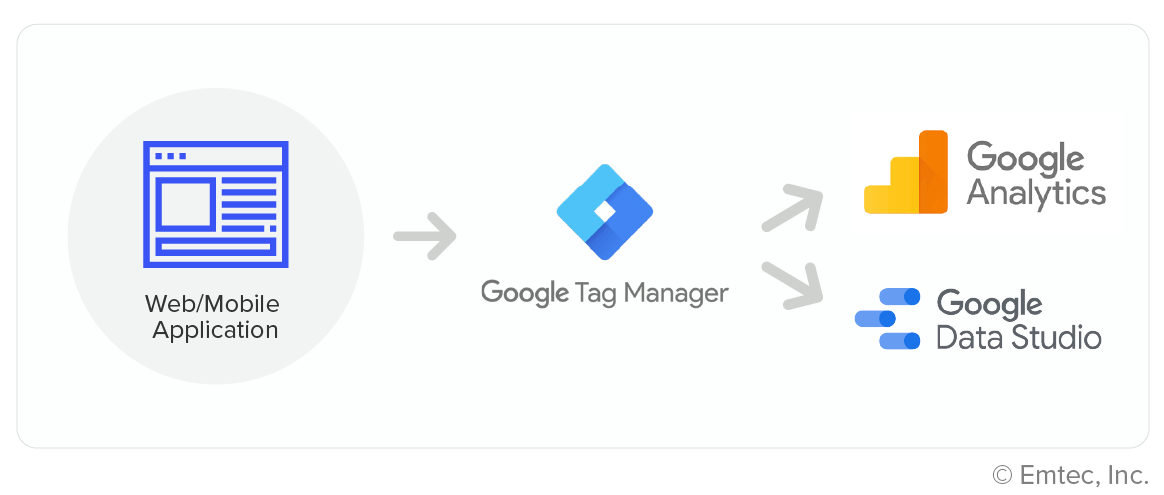The year 2020 thrust most organizations into an online mode. To maintain business continuity, Digital platforms have become the primary channel of interaction for new customer acquisition and client communications. This shift has made acquiring data on user behavior through advanced digital analytics exceedingly important for firms who have historically not had much of a digital focus or presence.
Digital Analytics helps enhance application performance by analyzing user trends and demographics to provide following benefits-
- Gain insight into the online behavior of their users
- Identify where their potential customers are coming from
- Better understand how customers make decisions on their purchases
- Build and monitor KPIs specific to their business processes
- Improve website or application effectiveness
- Level-up their marketing and communication strategies
- Utilize these actionable insights for competitive advantage
Gathering and analyzing user data can be a significant undertaking but is critical in firms shifting to a data-driven culture. McKinsey shared the top three capabilities that companies need to possess for their digital analytics initiatives to be successful:
- First, companies must be able to identify, combine, and manage multiple sources of data.
- Second, businesses need the capability to build advanced analytics models for predicting and optimizing outcomes.
- Third, and most critical, the leadership must possess strategic muscle to transform the organization, enabling enterprise data and business models to fuel better decisions.
As seen with most organizations, they have a fantastic product/service but may not have much clarity, or strategy around how to effectively leverage user data for growth. The first step is to identify the right set of tools and platforms to support your digital analytics initiatives.

Top Digital Analytics Tools by Google
The market is filled with a plethora of paid and free tools; however, our advice is to always begin your digital analytics journey with Google. Here are a few of the more widely used Google tools for web and mobile application analytics –
- Google Analytics
Google Analytics (GA) is a free tool that you can use for tracking, measuring, analyzing, and maintaining your website data. It helps marketers
- Check real-time activities of users
- Understand where website visitors are from (Geo-based data)
- Learn how they found your website (source)
- Analyze user / visitor behavior for trends
- Set goals and conversions
- Create graphical reports for stakeholder consumption and evaluation
- Segment your visitors based on various categories
- Google Tags Manager
GA configuration and setup is extremely easy thanks to the introduction of Google Tags Manager (GTM). You simply need to configure the (GA) property tag on your website’s for every web page you wish to track. This is usually universally configured for the entire website, to avoid missed pages. Before Google Tags Manager, custom events such as tracking the usage of a button on the website, tracking page scrolls, getting customer info based on their website activity etc. were set up by configuring the ga.js code for every individual event. However, with Google Tags Manager, things have become much easier. With Google Tag Manager, you can –
- Send highly customized data for Google Analytics to capture
- Set-up unlimited events for the website such as button clicked, video played, email sent, form submission, etc. and track all details in Google Analytics
- Achieve a faster loading speed – without having to configure tags in website code
- Have instant feedback on whether a certain tag/trigger is working with its Debug mode (Preview)
- Utilize it even on non-Google tools
- Have all tracking in one place – you will not need to configure third-party tools separately
GTM works around three important components – Tags, Triggers and Variables – that are all interconnected. A “Tag” can be for anything – an event, page view tag, social, e-commerce transaction etc. To make a tag work, you would configure a “Trigger” like HTML code, a data layer event, custom JavaScript event, etc. A “Variable” is something that defines a trigger. With GTM in place, marketers can control the codes that appear in the HTML directly. However, you will need to have a basic understanding of HTML, JavaScript, and CSS to fully leverage the power of Google Tag Manager.
- Google Data Studio
Google Data studio is a dashboarding and visualization tool that takes various data sources and enables you to structure that data within a custom dashboard for easy consumption by your target audience. It is a great tool to track KPIs for primary business objectives and generate reports against those key metrics for any period. It may not be as feature-rich compared to other BI (Business Intelligence) tools, but if utilized well, it can create highly elaborate reports. Google Data Studio integrates seamlessly with Google Analytics, AdWords, BigQuery, MySQL, PostgreSQL, YouTube Analytics, etc. Here is a list of features that Data studio offers –
- Gather real-time data from various sources and toggle between date ranges as needed
- Add calculated metrics for features that are necessary for your reports but are not built-in – mean, median, average, percentage values and more
- Unlimited filters, page tracking and report creation
- Sort data using multiple events, date, time, etc.
- A highly effective and secured sharing capability. Assign viewing/editing rights as required
- 12 visualizing formats for your presenting pleasure
As Peter Drucker has rightly said, ‘If you can’t measure it, you can’t improve it.’
Investing in an enterprise-wide data analytics strategy is the first step towards a data-driven culture. Just like a business balance sheet, it clearly shows where a company is headed and the status of profits and losses. Similarly, for digital focused organizations, website analytics plays an important role as it provides user insights and improve its performance. Arm your team with tools to recognize and troubleshoot shortcomings as early as possible by implementing analytics to gain knowledge on user trends and metrics.
While the simplicity of Google tools is unparalleled, sometimes organizations lack the necessary in-house skills or the time to focus on the setup and management of these digital analytics tools. That’s why you need –
An expert digital analytics partner
The Bridgenext (formerly Emtec Digital) team comprises a wide range of talent and expertise across digital analysts. Industry leaders leverage our technology acumen and industry experience to build products with data as the focal point to bridge the gap between user experience and business goals. Our engineers ensure transparency in the product performance by developing products with built in analytics. This benefits clients in the following ways-
- Build data-driven systems and solutions
- Gain insights to improve business process and decision making
- In-depth analysis to improve application efficiency
- Tap into numerous KPIs- data consumption, performance, expenditure and ROI
Want actionable intelligence from your user behavior data? Contact our experts, today!



